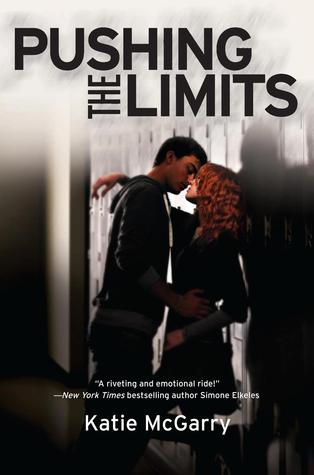
Several years ago, I attended a SCBWI workshop with an editor from Harper Collins. She told us to take a book we love and read it three times, consecutively. Great idea, except I hadn’t read a book at that point that I loved enough to use for the assignment. That changed recently when I discovered the YA contemporary novel Pushing the Limits by Katie McGarry. This book not only had me bawling as I read it, I cried a few days later when I thought about one specific scene. I knew I had to analyze the book to see what Katie did to make it my favorite book of the year.
First Read Through
Because I first read the book back in July, that didn’t count toward the assignment. It was too long ago. I had to start again. I reread the book without stopping to take notes. And yes, I cried at the same scene that I cried at the first time.
Second Read Through
This time I focused on story structure. Pushing the Limits (PTL) is a dual POV story, alternating between the two main characters: Noah and Echo. Because I love the book Save the Cat (STC) by Blake Synder, I used it to break down PTL according to Blake’s story structure beats. You don’t have to use STC. There are other great books that also discuss story structure. They’re all very similar and can be applied to most stories.
First, I created a table with three columns. This is because I was dealing with two points of view. I assigned ‘Echo’ to the first column, ‘Noah’ to the second one, and the third column was reserved for the STC beats. For example, in PTL the catalyst moment falls under one of Noah’s scenes. I wrote ‘Catalyst’ in the third column in blue ink (for Noah) and described in one sentence the catalyst moment. I used a different color for Echo.
Next, I wrote the GMC (Goal, Motivation, Conflict) for the POV character of each scene. I also added any notes about plot that I wanted to include. And yes, I cried again at that one emotion-filled scene.
Third Read Through
This time I focused on characterization and the emotional impact of the story. For the main characters (Echo and Noah), I listed:
- Fears
- Key issues (e.g. both have issues of trust and issues with authority, but not in the same way)
- Word to describe them (Noah is self-confident; Echo is insecure)
- Story goal for each
- What Echo and Noah have in common. In other words, the connection that binds them together for the story (since PTL is a romance)
- Wound or fatal flaw
- Identity (how others view them. Their personal armor, so to speak)
- The real them (who they really are when they drop the personal armor).
- Moments that revealed emotion
- Any symbolism used
- Use of the senses
- Small moments with huge impact
- Characterization (for all the characters)
- Hot make out scenes :)
Some of you are no doubt cringing at the amount of time involved for this level of analysis. To me, it was worth it. I learned so much about why I loved the book and how to make my stories (especially my dual POV stories) stronger.
Do you analyze books you love (or dislike)? If so, what do you looked for? How many times do you usually read a book consecutively when you analyze it?